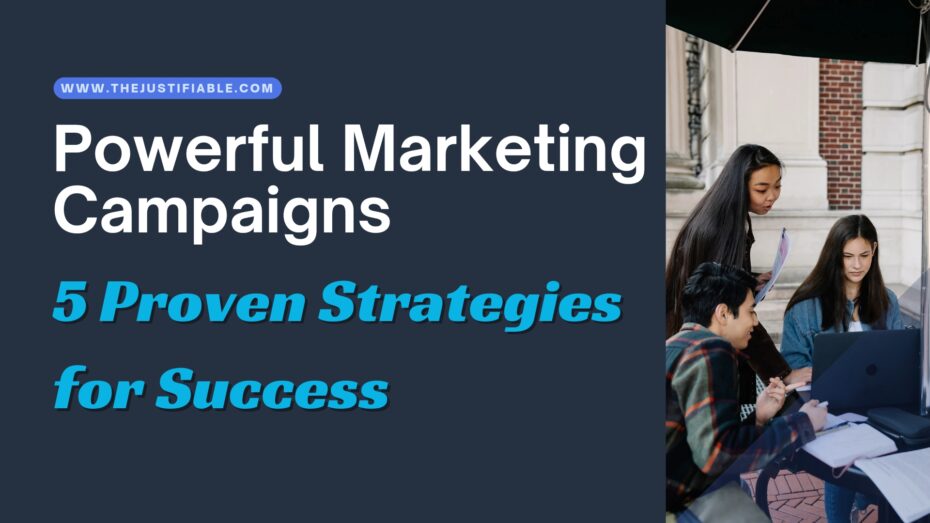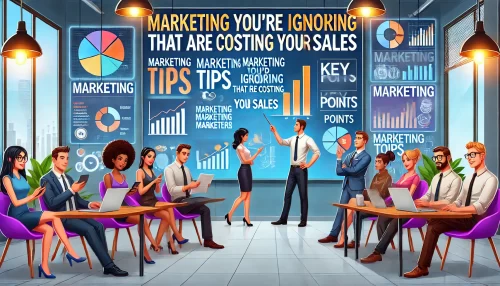How can online marketing help businesses thrive in today’s digital landscape? Are you struggling to attract new customers or wondering how online marketing strategies can boost your brand’s visibility?
This guide will provide actionable insights on how online marketing helps businesses expand their customer base and grow effectively.
Understanding How Online Marketing Helps Business
Online marketing has become an essential tool for businesses aiming to attract new customers and grow their brand. It offers unparalleled opportunities to connect with audiences, boost visibility, and drive sales. Let’s explore the transformative role it plays in modern business.
Exploring The Core Benefits Of Online Marketing
Online marketing provides businesses with a powerful way to engage with customers and stay competitive. Whether through targeted campaigns or insightful analytics, it opens up new avenues for growth.
The first significant benefit is reach. Online marketing allows businesses to connect with audiences globally, offering unparalleled access to potential customers regardless of geographic location. This means even small businesses can compete on a larger scale.
Another advantage lies in cost-effectiveness. Compared to traditional marketing, online channels like social media, email, and pay-per-click ads require less investment and often yield higher returns. I’ve seen businesses double their leads simply by focusing on their online presence.
Flexibility is a third major benefit. Businesses can adapt online strategies quickly based on customer feedback and market trends. For instance, tweaking an ad campaign mid-run can lead to better engagement without losing significant resources.
Lastly, online marketing creates valuable data. Tools like Google Analytics provide actionable insights into customer behavior, allowing businesses to refine strategies, personalize messaging, and ultimately deliver better results.
Key Ways Marketing Channels Drive Customer Growth
Different online marketing channels serve as unique pathways for businesses to attract and retain customers. Each channel offers distinct advantages tailored to varying needs and goals.
Social media platforms like Facebook and Instagram connect businesses with billions of users worldwide. I’ve noticed that businesses using targeted ads and interactive posts often see rapid growth in customer engagement and loyalty.
Search engine marketing drives growth by making businesses discoverable. When someone searches for services or products, having optimized content ensures your business appears prominently. This builds credibility and increases traffic.
Email marketing fosters relationships by reaching customers directly in their inbox. Personalized email campaigns that address specific needs create a strong sense of connection, often leading to increased sales and repeat business.
Affiliate marketing is another growth tool. Partnering with bloggers or influencers expands your audience, helping you reach potential customers through trusted third parties.
Why Online Marketing Outperforms Traditional Methods
Online marketing has rapidly eclipsed traditional advertising in effectiveness, primarily due to its ability to adapt, scale, and engage. Let’s unpack why it’s the preferred choice for modern businesses.
First, online marketing is measurable. Unlike traditional billboards or print ads, businesses can track every click, impression, and conversion. I recommend using metrics like click-through rates and return on ad spend to make informed decisions and maximize impact.
It’s also more interactive. Through comments, likes, and shares, online marketing fosters two-way communication, letting businesses actively engage with their audience. This immediacy is impossible with static ads or TV commercials.
Another edge is targeting. With online tools, you can narrow your audience by demographics, interests, or behaviors. This precision helps businesses connect with the right customers while minimizing wasted efforts.
Finally, scalability makes online marketing unbeatable. Businesses can run a small, localized campaign or a global one with the same tools. I’ve seen startups leverage this scalability to compete with much larger competitors.
Leveraging Social Media To Reach New Audiences
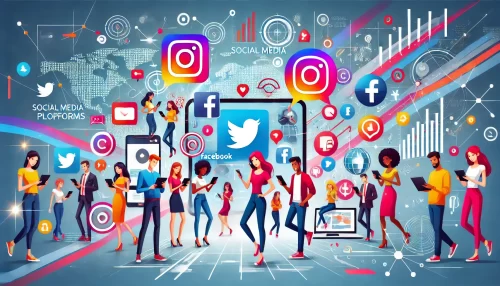
Social media has transformed how businesses connect with customers, offering unique opportunities to engage with large, diverse audiences. Understanding how online marketing helps businesses grow through platforms like Facebook, Instagram, and LinkedIn is key to tapping into this potential.
How Social Media Ads Attract Ideal Customers
Social media ads are a powerful tool for targeting specific audiences, helping businesses reach potential customers most likely to convert.
The beauty of social media ads lies in their precision. Platforms like Facebook and Instagram allow you to target users based on demographics, interests, and behaviors. If you’re selling eco-friendly products, you can tailor your ads to environmentally conscious shoppers, ensuring every dollar spent reaches the right people.
Engaging visuals and compelling copy are crucial for grabbing attention. I always advise businesses to invest in high-quality graphics or videos and create headlines that address a specific problem or desire. For example, an ad for fitness gear might say, “Get Stronger, Faster – Shop Now!”
Analytics tools on social platforms offer insights that let you refine campaigns. If you notice an ad isn’t performing as expected, tweaking elements like the headline, image, or audience settings can make all the difference. The ability to adjust strategies quickly is what makes social media advertising so effective.
I’ve also seen how retargeting ads work wonders for customer conversion. These ads remind users about products they’ve viewed or abandoned in carts, bringing them back to complete their purchase.
Using Viral Content To Enhance Engagement
Creating viral content is a dream for businesses looking to maximize their reach. When done right, it generates massive engagement and brand awareness.
The key to viral content is relatability. Posts that resonate emotionally—whether through humor, inspiration, or nostalgia—tend to be shared widely. A brand selling pet supplies, for example, might share a heartwarming video of a rescue dog finding a loving home. Such content tugs at heartstrings and encourages users to share.
Timing matters too. Trends dominate social media, and hopping onto a trend can skyrocket visibility. I suggest keeping an eye on trending hashtags or challenges and crafting content that aligns with your brand. For instance, a coffee shop could join a trending recipe challenge with a fun twist on a popular drink.
Interactive content also enhances engagement. Polls, quizzes, and Q&A sessions encourage participation, making followers feel involved with the brand. An example could be a clothing brand asking, “Which outfit is your weekend favorite? Vote now!”
Lastly, don’t underestimate the power of user-generated content (UGC). Encourage customers to share photos or videos featuring your product, then repost them. It’s not just free advertising—it’s social proof that builds trust.
Building Relationships Through Social Platforms
Social media isn’t just for promotion; it’s a place to foster meaningful relationships with your audience, creating loyalty and trust.
Consistency is vital. Regularly posting updates, tips, or behind-the-scenes content keeps your audience engaged and connected. I’ve noticed that businesses that maintain a consistent tone and posting schedule often build stronger communities.
Responding to comments and messages promptly shows customers you care. Whether it’s a question about your services or feedback on a product, engaging with followers turns a simple interaction into an opportunity to build rapport.
Hosting live sessions is another effective way to connect. Q&A sessions, product launches, or even casual chats allow businesses to interact in real-time, making customers feel valued and involved. For example, a skincare brand might host a live tutorial on using their products for the best results.
Collaborating with influencers or partnering with other brands also broadens your reach and introduces your business to new audiences. I’ve seen small businesses grow exponentially by teaming up with influencers whose followers trust their recommendations.
Search Engine Optimization For Customer Acquisition
Search engine optimization (SEO) is a cornerstone of online marketing that helps businesses attract customers organically. By optimizing websites to rank higher on search engines, businesses can increase visibility, drive traffic, and connect with audiences actively searching for their products or services.
How SEO Drives Organic Traffic To Your Website
SEO is a strategic approach to improving your website’s ranking on search engines, making it easier for potential customers to find you.
One of the biggest advantages of SEO is its ability to bring in consistent, organic traffic without paying for ads. I’ve often seen businesses experience steady growth in website visitors simply by improving their SEO efforts. When your site ranks on the first page of search results, you’re naturally in front of an audience that’s already interested in what you offer.
High-quality content plays a major role in driving traffic. Blogs, guides, and landing pages optimized with relevant keywords draw readers who are searching for answers or solutions. For example, a business selling eco-friendly cleaning products could create blog posts about sustainable living tips to attract like-minded customers.
Website performance is also critical. If a site is slow or difficult to navigate, visitors leave quickly, which harms your search engine ranking. I suggest using tools to improve load times and ensure mobile-friendliness, as these directly impact SEO success.
Another factor is search intent. Google prioritizes content that matches user queries. Businesses that align their content with what users are searching for see higher engagement and conversion rates, making SEO a valuable long-term strategy for customer acquisition.
Choosing Keywords That Match Customer Intent
Keywords are the backbone of SEO, and choosing the right ones helps businesses align their offerings with what customers are actively seeking.
To find effective keywords, start by researching terms your audience is likely to search. I recommend using tools like Google Keyword Planner or SEMrush to discover relevant keywords with high search volume but low competition. These tools also highlight related phrases, giving you more ideas for optimization.
Long-tail keywords are especially valuable. These are longer, more specific phrases like “best running shoes for beginners.” While they may have lower search volumes, they often attract users with clear purchase intent. Including these in your content can result in higher conversion rates.
It’s important to use keywords naturally. For example, instead of forcing a phrase like “best smartphones 2024,” weave it into a sentence like, “Looking for the best smartphones of 2024? Here’s what you need to know.” This approach makes your content engaging and reader-friendly.
Avoid keyword stuffing, which can hurt both readability and your SEO rankings. I suggest aiming for a keyword density of around 1-2% and focusing on creating meaningful content that provides value.
Building Backlinks To Improve Online Visibility
Backlinks—links from other websites to yours—are a crucial factor in boosting your site’s authority and visibility on search engines.
The best backlinks come from reputable, high-quality websites in your industry. For instance, if you own a fitness brand, having a popular health blog link to your site signals to search engines that your content is valuable. I recommend reaching out to industry leaders or influencers for collaborations that can lead to backlinks.
Creating shareable content is another effective way to earn backlinks. Infographics, research reports, and how-to guides often get cited and shared, resulting in natural backlinks. For example, a study on the benefits of remote work could attract links from HR blogs or tech sites.
Guest posting is also worth exploring. Writing articles for other websites allows you to showcase your expertise while linking back to your own site. Just ensure the sites you partner with are relevant and authoritative.
Finally, monitor your backlink profile regularly to identify and disavow low-quality links. Search engines penalize spammy or irrelevant backlinks, so staying proactive in maintaining your link health is essential for sustained SEO success.
Email Marketing To Engage And Convert Leads
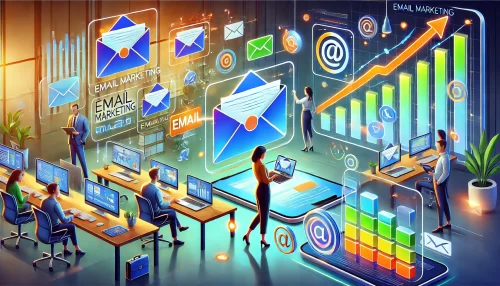
Email marketing is one of the most effective ways to engage with potential customers and convert them into loyal buyers. Businesses leveraging targeted email strategies can build meaningful relationships, nurture leads, and drive consistent growth.
How Personalized Emails Boost Conversions
Personalized emails deliver tailored experiences that resonate with recipients, increasing the likelihood of conversions and customer satisfaction.
When you address a customer by their name or reference their past interactions, you create a sense of connection. For instance, an email starting with “Hi Sarah, we noticed you loved our summer collection” feels more engaging than a generic one. I recommend using customer data like browsing history or purchase habits to craft messages that speak directly to their preferences.
Segmentation plays a critical role in personalization. Grouping your audience into categories—such as new subscribers, frequent buyers, or inactive users—allows you to tailor messages that are relevant to their needs. A welcome email to new subscribers might include a discount code, while loyal customers might appreciate early access to new products.
Dynamic content is another powerful tool. You can include elements like product recommendations or location-specific offers to make your emails more compelling. For instance, if a customer frequently buys fitness gear, showcasing the latest in workout apparel can spark interest.
Testing different subject lines, visuals, and call-to-action buttons ensures you find what resonates best with your audience. For example, “Exclusive Offer Just For You” might perform better than “Shop Our Sale.” I suggest running A/B tests regularly to optimize email performance.
Using Automation To Nurture Prospective Customers
Automation streamlines email marketing, enabling businesses to maintain consistent communication and nurture leads effortlessly.
Automated welcome emails are an excellent starting point. When someone subscribes to your newsletter, sending a warm, informative message sets the tone for your relationship. I’ve seen brands use this opportunity to introduce themselves, share their story, and highlight unique selling points.
Drip campaigns are another effective use of automation. These are a series of emails sent over time, designed to guide leads through the sales funnel. For instance, an online course provider could send a sequence that includes free resources, testimonials, and a final call to action for enrollment.
Behavior-triggered emails enhance the customer journey. If a user abandons their cart, an automated email reminding them of their selected items can bring them back. Adding a gentle nudge like “Don’t miss out—your cart is waiting!” often increases conversions.
Consistency matters when nurturing leads. Sending timely follow-ups without overwhelming recipients builds trust. I advise using automation tools to schedule emails based on user behavior, ensuring your brand stays relevant without feeling intrusive.
Creating Offers That Drive Repeat Business
Exclusive offers and incentives in email campaigns encourage customers to return and continue engaging with your brand.
Loyalty programs can work wonders for repeat business. Sending emails with points updates, rewards, or special perks reminds customers of the value of staying connected. For example, “You’ve earned $10 off your next purchase—shop now!” is both exciting and motivating.
Seasonal promotions are another effective strategy. Holiday-themed emails offering discounts or limited-time deals create urgency and boost sales. I suggest using phrases like “24 Hours Only” or “Holiday Favorites You’ll Love” to inspire immediate action.
Flash sales and exclusive previews also engage existing customers. An email offering “VIP access to our new collection” makes recipients feel valued, fostering loyalty. Pairing these with countdown timers can amplify excitement.
Referral programs incentivize repeat business while expanding your customer base. An email encouraging users to “Invite a friend and earn $20 off your next order” benefits both the referrer and the new customer, creating a win-win scenario.
Content Marketing To Educate And Inspire Trust
Content marketing is a proven strategy that helps businesses educate their audience, build credibility, and establish trust. By sharing valuable, relevant content, businesses can strengthen their relationships with customers while driving growth.
How Blogging Establishes Industry Expertise
Blogging is a powerful tool for businesses to demonstrate expertise, connect with readers, and answer their most pressing questions.
Creating blogs focused on your industry’s key topics helps you establish authority. For instance, a digital marketing agency might write a post titled, “Top 10 SEO Strategies for 2024.” Posts like these not only educate readers but also position the business as a go-to resource. I always suggest addressing real pain points your audience faces to make your content more relatable and valuable.
Consistency is crucial for building trust through blogging. Publishing regularly shows your commitment to providing fresh, up-to-date insights. A well-maintained blog builds credibility and encourages readers to return for more advice, creating long-term loyalty.
Adding case studies, data, and statistics to your blogs boosts their authority. For example, sharing how a client’s website traffic grew 200% using a specific technique strengthens your claims. I’ve found that readers often trust brands more when they see real-world results backing up the content.
Interactive elements like polls, quizzes, or comment sections enhance engagement. They give your audience a voice and make your blogs feel like conversations rather than one-sided information dumps. This interaction deepens trust and keeps readers invested.
Creating Infographics For Better Engagement
Infographics simplify complex information, making it visually appealing and easy to understand. They’re ideal for capturing attention and delivering impactful messages.
Visual content like infographics grabs attention faster than plain text. For instance, a financial advisory firm could use an infographic to showcase “Steps to Create a Budget.” Presenting this visually is not only engaging but also more memorable for readers.
Infographics are highly shareable. When you create visually stunning, data-rich content, your audience is more likely to share it on social media. This extends your reach and drives traffic to your website. I suggest including your brand logo or website link on infographics to reinforce brand recognition.
Breaking down data into digestible visuals helps clarify complicated ideas. For example, instead of writing paragraphs about market trends, showing a graph or chart immediately communicates the message. Readers appreciate this efficiency and associate your brand with clarity and value.
Tools like Canva or Piktochart make designing infographics accessible for everyone. I believe investing time into learning these tools or hiring a professional can significantly enhance the impact of your content marketing strategy.
Leveraging Video Content For Lead Generation
Video content combines storytelling with engagement, making it one of the most effective mediums for generating leads and building trust.
People prefer video because it’s dynamic and easier to consume than long articles. A short explainer video about your product or service can convey your message clearly in just a few minutes. I often recommend adding subtitles to make videos accessible to a broader audience.
Live videos and webinars offer real-time interaction. Hosting a Q&A session or product demo allows you to address customer concerns directly, fostering transparency. For instance, a skincare brand could host a live tutorial on how to use their products, answering viewer questions along the way.
Video testimonials build trust faster than written reviews. A video of a satisfied customer sharing their success story with your product feels authentic and persuasive. I’ve seen businesses use this tactic effectively to convert hesitant prospects into loyal customers.
Optimizing video content for SEO maximizes its reach. Use descriptive titles, relevant keywords, and engaging thumbnails to attract viewers. Embedding videos on your website or sharing them across platforms like YouTube and social media increases visibility and enhances your content marketing efforts.
Paid Advertising For Immediate Results
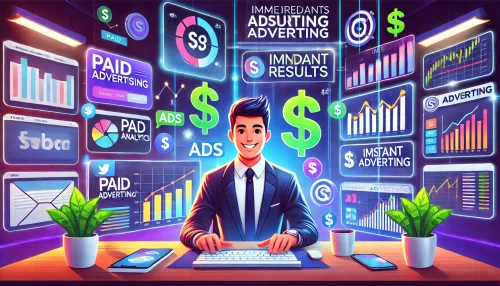
Paid advertising provides businesses with a fast and effective way to boost visibility, attract new customers, and generate sales. With tools like pay-per-click ads and retargeting strategies, businesses can achieve quick results while optimizing their marketing spend.
Using Pay-Per-Click Ads To Reach Target Audiences
Pay-per-click (PPC) ads are one of the most targeted and cost-efficient ways to connect with potential customers searching for your products or services.
The beauty of PPC ads lies in their precision. Platforms like Google Ads allow you to bid on specific keywords your audience searches for, ensuring your ad appears at the top of relevant search results. For instance, a local bakery could target “best cupcakes near me” to attract customers actively looking for treats in their area.
Crafting compelling ad copy is crucial for maximizing PPC effectiveness. I suggest focusing on solving a problem or offering a clear benefit. For example, “Order Freshly Baked Goods—Delivered Today!” is much more enticing than a generic “Best Bakery in Town.” Include strong call-to-action phrases like “Shop Now” or “Learn More” to encourage clicks.
Budget control is another major advantage of PPC. You set a daily or campaign-specific limit, ensuring you never spend more than you’re comfortable with. I’ve seen small businesses thrive using PPC campaigns tailored to their budget, allowing them to compete with larger brands.
Tracking performance is straightforward with PPC. Metrics like click-through rates (CTR) and conversion rates offer insights into what’s working and what needs adjustment. I advise monitoring these metrics regularly to refine your campaigns and maximize returns.
How Retargeting Ads Bring Back Lost Leads
Retargeting ads are a smart way to re-engage potential customers who visited your site but didn’t convert. They serve as a gentle reminder of your offerings, keeping your brand top of mind.
One of the biggest advantages of retargeting is its ability to personalize the customer journey. If someone viewed a specific product on your site, showing them an ad featuring that exact item increases the chances they’ll return to make a purchase. For example, an online clothing store might display ads for the jacket a customer left in their cart.
Dynamic retargeting ads take personalization a step further. These ads automatically update based on user behavior, showcasing items or services relevant to their previous interactions. I often recommend businesses use dynamic ads for e-commerce platforms, as they’ve proven highly effective at boosting conversions.
Frequency is critical with retargeting. Too many ads can overwhelm users, while too few may not make an impact. I suggest setting a frequency cap to ensure your ads remain a helpful reminder without becoming intrusive.
Pairing retargeting with incentives works wonders. Offering a discount or free shipping in a retargeting ad can encourage hesitant customers to complete their purchase. For instance, “Come Back and Save 10% Off Your Order” is a compelling message that drives action.
Measuring ROI From Paid Campaigns
Measuring the return on investment (ROI) of your paid advertising campaigns ensures you’re making the most of your budget while identifying areas for improvement.
Start by tracking key performance indicators (KPIs) like CTR, cost-per-click (CPC), and conversion rates. These metrics give a clear picture of how well your campaigns are performing. I always recommend setting specific goals for each campaign, whether it’s increasing website traffic, boosting sales, or generating leads.
Attribution models help you understand which ads contributed to conversions. Tools like Google Analytics provide insights into the customer journey, showing whether a PPC ad, retargeting ad, or organic search led to a sale. Knowing this allows you to allocate resources to the most effective channels.
Comparing the cost of your campaigns to the revenue generated reveals their profitability. For example, if a $500 ad spend results in $2,000 in sales, your ROI is clear. I believe this analysis is essential for making data-driven decisions that improve future campaigns.
Testing and refining campaigns is an ongoing process. Split testing (A/B testing) lets you experiment with different headlines, visuals, and audiences to identify what resonates most. Continuous optimization ensures you stay competitive and achieve maximum returns on your advertising investments.
Harnessing Analytics To Refine Strategies
Analytics provide businesses with invaluable insights to optimize marketing strategies and achieve better results. With data-driven decisions, businesses can understand their audience, track campaign success, and implement improvements for sustained growth.
Understanding Audience Behavior Through Data
Analyzing audience behavior helps businesses identify what resonates with their customers and tailor their strategies for maximum impact.
Audience behavior data shows patterns like how visitors interact with your website, what products they browse, and how long they stay on your pages. For example, if users frequently visit a specific category on your e-commerce site, you can prioritize promoting related products or creating tailored offers. I suggest using tools like Google Analytics to uncover these insights and act on them quickly.
Demographic information such as age, location, and preferences allows businesses to personalize their marketing efforts. Knowing your audience lets you craft messages that feel relevant. For instance, a tech company targeting younger audiences might emphasize innovative features, while messaging for an older audience might highlight ease of use.
Behavioral data isn’t just about trends; it’s also about solving problems. High bounce rates on specific pages might indicate confusing navigation or slow loading times. Addressing these issues improves the user experience and keeps potential customers engaged longer.
Building customer personas based on data helps refine marketing strategies. These personas represent your ideal customers and guide everything from content creation to ad targeting. For example, a fitness brand might focus on personas like “busy professionals” or “new moms” to create more meaningful connections.
Tracking Campaign Performance With Key Metrics
Monitoring campaign performance metrics ensures businesses can identify successes, address challenges, and allocate resources effectively.
Start with the basics: impressions, clicks, and conversions. These metrics provide a clear picture of whether your campaigns are reaching the right audience and driving desired actions. For instance, a high number of clicks but low conversions might suggest your landing page needs improvement.
Cost-related metrics like cost-per-click (CPC) and return on ad spend (ROAS) are essential for evaluating efficiency. I recommend keeping a close eye on these numbers to ensure your campaigns stay profitable and don’t exceed budget limits.
Engagement metrics like time on page, social shares, and comments reveal how well your content resonates with your audience. For example, a blog post that generates lots of shares might indicate a topic worth expanding into a series or video.
Using campaign-specific tracking links, like UTM parameters, makes it easier to pinpoint where traffic originates. This granular insight helps you focus on the platforms and tactics delivering the most value, whether that’s paid search, email marketing, or social media.
Using A/B Testing To Improve Results
A/B testing allows businesses to compare variations of their marketing efforts, helping them identify what works best and optimize performance.
A/B testing involves creating two versions of an asset, like an email subject line or a landing page, and seeing which performs better. I’ve often found that even small changes, such as tweaking a headline or button color, can significantly impact results. For example, “Shop the Sale Now” might outperform “Big Discounts Inside” in terms of click-through rates.
Consistency is key to accurate results. Run A/B tests with only one variable changed at a time—such as the layout or call-to-action text. This ensures you can confidently attribute any differences in performance to the specific adjustment you made.
Test multiple elements across your marketing channels. Try different ad formats, social media captions, or email designs to discover what resonates most with your audience. For example, testing carousel ads against static image ads on Instagram might reveal that your audience prefers one over the other.
Keep refining based on test results. A/B testing isn’t a one-time activity—it’s an ongoing process that helps you continuously improve your marketing strategies. I suggest documenting your findings and applying them across similar campaigns for consistent growth and better engagement.
Mobile Marketing For On-The-Go Customers
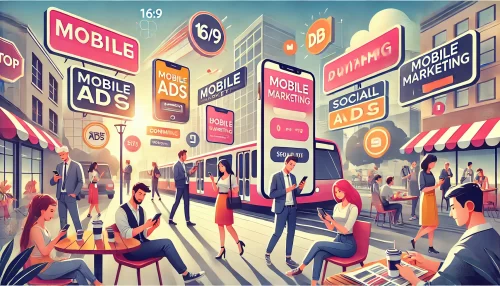
Mobile marketing has revolutionized how businesses connect with customers, offering real-time engagement and unparalleled convenience. As mobile devices dominate consumer habits, leveraging mobile marketing effectively ensures businesses stay relevant and accessible.
Why Mobile Optimization Is Crucial For Success
Mobile optimization is essential for delivering seamless user experiences and retaining customer attention in a mobile-first world.
A mobile-optimized website ensures visitors can navigate, browse, and purchase easily, regardless of their device. For example, responsive designs that adjust to screen sizes provide smooth functionality, which is vital for reducing bounce rates. I recommend testing your website across various devices to guarantee a flawless experience.
Speed matters when it comes to mobile browsing. Studies show users abandon sites that take longer than three seconds to load. Compressing images, using efficient code, and leveraging caching tools can dramatically improve load times. Fast-loading pages keep customers engaged and encourage them to explore further.
Search engines prioritize mobile-friendly sites in their rankings, making optimization a key factor for visibility. Google’s mobile-first indexing means your site’s mobile version determines its search performance. Optimizing for mobile doesn’t just improve user experience—it boosts your chances of ranking higher.
Mobile optimization also enhances accessibility for on-the-go customers. Whether they’re checking out a product during lunch or researching services while commuting, providing a hassle-free experience ensures your business remains top of mind.
Using SMS Campaigns To Drive Quick Responses
SMS campaigns deliver direct and immediate communication, making them highly effective for driving action and engaging customers.
The immediacy of SMS sets it apart from other channels. Messages are often read within minutes, making SMS ideal for time-sensitive offers or updates. For instance, “Flash Sale: 20% off for the next 4 hours!” grabs attention and encourages quick responses.
Personalization is key to effective SMS campaigns. Addressing recipients by name or tailoring messages to their preferences creates a stronger connection. A fitness studio, for example, might send workout reminders or exclusive discounts on favorite classes, fostering loyalty and engagement.
Clear and concise messaging is crucial. With limited character space, focus on delivering value quickly. I suggest including a compelling call-to-action, like “Click here to book now” or “Reply YES to claim your deal,” to guide recipients toward taking the next step.
Integrating SMS with other channels enhances its impact. Combining it with email or app notifications ensures consistent messaging while giving customers multiple ways to engage. For example, a retail brand could send an SMS about a sale and follow up with an email showcasing featured products.
Creating Mobile Apps To Boost Brand Loyalty
Mobile apps provide a dedicated platform for businesses to engage with customers, offering convenience and fostering long-term loyalty.
A well-designed mobile app creates a personalized experience for users. Features like customized recommendations, saved preferences, and exclusive app-only deals make customers feel valued. I’ve noticed businesses that offer loyalty rewards through apps often see increased repeat purchases and brand advocacy.
Push notifications are a standout feature of mobile apps. These real-time alerts keep your brand visible without being intrusive. For instance, a food delivery app might send a notification like, “Craving pizza? Get 15% off your next order!” This keeps your audience engaged while driving sales.
Apps enhance customer convenience, which strengthens brand loyalty. For example, banking apps that allow users to manage finances or retail apps with seamless checkout options save time and reduce friction. Customers appreciate this ease, leading to stronger relationships.
Regular updates ensure apps stay fresh and relevant. Adding new features or improving usability based on customer feedback shows your commitment to delivering value. I advise businesses to monitor app reviews and incorporate user suggestions to maintain satisfaction and loyalty.
Enhancing Customer Experience Through Online Marketing
Online marketing is a game-changer for improving customer experience, offering tools and strategies to deliver more personalized, efficient, and engaging interactions. Businesses that prioritize customer satisfaction through online marketing build stronger relationships and drive loyalty.
How Chatbots Improve Customer Support Efficiency
Chatbots have revolutionized customer support by providing instant, 24/7 assistance, enhancing satisfaction while reducing response times.
The real-time nature of chatbots is one of their biggest strengths. When customers have questions, a chatbot can provide immediate answers without making them wait for a human representative. For example, a chatbot on an e-commerce site can guide users through product selection or troubleshoot order issues in seconds. This level of convenience leaves a positive impression.
Chatbots also handle repetitive inquiries efficiently, freeing up human agents to focus on more complex tasks. I’ve seen businesses implement chatbots to answer FAQs, like return policies or delivery timelines, which streamlines operations and improves customer service overall.
Personalization with chatbots is becoming increasingly sophisticated. Using data, chatbots can greet users by name, recommend products based on browsing history, or even remember past interactions. These touches make customers feel valued and understood.
A chatbot’s ability to integrate with other systems enhances its functionality. For instance, linking a chatbot to your CRM allows it to pull up customer details, making interactions seamless. I suggest businesses explore multi-platform chatbots that work on websites, apps, and social media for broader reach.
Building Personalized Experiences With AI Tools
AI tools empower businesses to create hyper-personalized experiences that resonate deeply with customers and enhance engagement.
AI-driven recommendations are one of the most impactful applications. Platforms like Netflix and Amazon use AI to suggest content or products tailored to user preferences, increasing the likelihood of conversions. Businesses of any size can adopt similar strategies to make customers feel like their needs are uniquely understood.
AI tools also help analyze customer behavior to predict future preferences. For example, if a customer frequently purchases fitness gear, AI can suggest complementary products like workout supplements or apparel. I recommend incorporating predictive analytics into your marketing strategy for higher personalization.
Dynamic content creation is another way AI tools enhance personalization. Emails, ads, or even website layouts can adjust based on a user’s location, past behavior, or interests. A retail brand might display different product categories for first-time visitors versus returning customers, making the experience more relevant.
Using AI for conversational marketing, such as virtual assistants or voice search optimization, creates natural interactions that feel human. I believe this approach builds trust and makes customers more comfortable engaging with your brand.
Managing Customer Feedback For Continuous Growth
Managing and acting on customer feedback is vital for improving experiences and fostering loyalty. Online marketing offers powerful tools to gather and utilize feedback effectively.
Soliciting feedback through surveys or review prompts shows customers that their opinions matter. A simple email asking, “How did we do?” can provide valuable insights into areas of improvement. I suggest offering incentives, like discounts or entry into a prize draw, to encourage responses.
Social media is another excellent platform for collecting feedback. Monitoring comments, mentions, and direct messages reveals what customers love and where they see room for improvement. Responding promptly to feedback demonstrates your commitment to meeting their needs.
Analyzing feedback helps identify patterns and prioritize changes. If multiple customers mention difficulty navigating your website, it’s clear that usability should be a top focus. I always recommend categorizing feedback into actionable themes to streamline your response strategy.
Using feedback to make visible improvements strengthens trust. Let customers know you’ve implemented their suggestions—such as adding a requested feature or updating your service. This approach not only enhances the experience but also deepens their loyalty to your brand.
Expanding Globally With Online Marketing

Expanding globally with online marketing allows businesses to tap into international markets, connect with diverse audiences, and significantly grow their reach. Strategic approaches ensure a seamless transition into new markets while building trust with global customers.
How To Reach International Audiences Effectively
Reaching international audiences requires a strategic mix of targeting, personalization, and cultural understanding to maximize impact and engagement.
Identifying the right markets is the first step. Use data analytics to determine where your products or services are in demand. For example, a skincare brand might find growing interest in eco-friendly products in Europe or Asia. I suggest starting with one or two target markets to focus your efforts and refine your strategy.
Leveraging global advertising platforms, like Google Ads and Facebook Ads, enables precise targeting of international audiences. These platforms allow you to filter by location, language, and interests. For instance, promoting a summer sale in Australia during their warmer months creates timely relevance.
Optimizing your website for international visitors is essential. This includes offering multiple language options, currency converters, and clear shipping information. A user-friendly experience instills confidence and makes it easier for global customers to engage with your brand.
Collaborating with local influencers helps bridge the gap between your business and international customers. Influencers who understand the culture and preferences of their audience can introduce your brand authentically, boosting trust and visibility.
Localizing Content To Connect With Different Markets
Localization tailors your messaging to resonate with specific markets, creating deeper connections with customers and enhancing engagement.
Language localization is a foundational step. Translating content accurately ensures it’s understood and appreciated. However, I recommend going beyond direct translations. Adapting idioms, humor, or cultural references makes your messaging feel more natural and relatable.
Visual elements also matter. Colors, images, and symbols can carry different meanings across cultures. For example, white is associated with purity in some cultures but mourning in others. Adjusting visuals to align with cultural norms shows respect and thoughtfulness.
Product offerings should reflect local preferences. If you’re a food brand entering a new market, consider the flavors or dietary restrictions common in that region. For instance, offering vegetarian options in India demonstrates awareness and inclusivity.
Localized social media accounts provide a direct line to your international audience. Sharing content specific to their holidays, events, or trending topics keeps your brand relevant and fosters stronger connections.
Understanding Cultural Sensitivities For Success
Cultural sensitivity is key to avoiding missteps and building positive relationships with global audiences through online marketing.
Researching cultural norms helps prevent miscommunications or unintentional offenses. For instance, some cultures value formality in business interactions, while others prefer a more casual approach. I recommend studying the traditions and practices of your target market to align your brand tone accordingly.
Time zones and holidays should factor into your campaigns. Sending promotional emails during local sleeping hours or neglecting significant holidays can make your brand seem out of touch. Scheduling content that aligns with their time and calendar creates a more personalized experience.
Respecting social and political contexts ensures your messaging remains appropriate. For example, promoting luxury items during an economic downturn in a specific country could backfire. Staying informed about the current environment is crucial for maintaining credibility.
Building relationships with local partners, such as agencies or distributors, helps you navigate cultural nuances effectively. They offer invaluable insights and guidance, ensuring your online marketing efforts are both respectful and impactful.
Maximizing ROI With Integrated Marketing Strategies
Integrated marketing strategies blend online and offline approaches, creating a unified message that resonates with customers while maximizing return on investment (ROI). Aligning these efforts ensures a cohesive brand experience and optimized performance.
Combining Online And Offline Campaigns Effectively
Blending online and offline campaigns helps businesses reach wider audiences and maintain consistency across multiple channels.
A strong example is using online ads to promote an in-store event. A clothing retailer might run a Facebook campaign announcing a grand opening sale, driving foot traffic to their new location. I’ve seen this strategy work well when digital promotions align closely with the in-person experience.
QR codes serve as another bridge between online and offline. Including QR codes on printed materials, like flyers or posters, encourages customers to visit your website or social media pages. A restaurant might use this tactic for online reservations or menus.
Storytelling ties both approaches together. A brand sharing its history through TV commercials can extend the narrative online with blog posts or interactive content. This creates a seamless journey that keeps customers engaged across platforms.
Tracking is crucial for measuring success. Using tools like unique coupon codes or dedicated URLs lets you determine which campaign elements drive the most conversions, ensuring each channel contributes meaningfully to your ROI.
Allocating Budgets For Maximum Customer Reach
Proper budget allocation ensures your marketing dollars go toward strategies that yield the greatest impact and customer engagement.
Start by analyzing past campaign data to understand which channels perform best. If social media ads consistently drive leads, increasing that budget could amplify results. I suggest regularly reviewing metrics like cost-per-lead (CPL) to make informed decisions.
Setting clear priorities helps guide spending. For example, a business focusing on brand awareness might allocate more to display ads and influencer partnerships, while one aiming for direct sales may invest in PPC campaigns. Clarity on objectives ensures funds are used strategically.
Diversification is key. Splitting budgets between proven tactics and experimental approaches minimizes risk while exploring new opportunities. I’ve seen businesses thrive by dedicating a small portion of their budget to emerging platforms or tools.
Adjusting budgets dynamically based on real-time performance allows for maximum ROI. For instance, if an email campaign outperforms initial expectations, shifting funds to expand it can capitalize on the momentum.
Using Customer Lifetime Value To Drive Strategy
Customer lifetime value (CLV) helps businesses focus on retaining high-value customers and guiding their marketing efforts for long-term growth.
Identifying your most profitable customers is the first step. Tools like CRM software analyze purchase history and engagement, revealing who brings in the most revenue. I recommend segmenting these customers for tailored retention strategies, such as loyalty programs or exclusive offers.
CLV also informs acquisition strategies. If your average customer spends $500 over their lifetime, you can confidently invest more in campaigns that bring in similar customers. This approach balances acquisition costs with long-term profitability.
Retention efforts, like personalized email campaigns or regular follow-ups, maximize CLV. For example, a subscription box company might offer renewal discounts to existing customers, ensuring they stay engaged over time.
Using CLV to evaluate marketing channels ensures smarter investment. If customers acquired through Instagram ads have higher CLVs than those from search ads, focusing resources on Instagram can deliver better overall returns.
Staying Ahead With Emerging Online Marketing Trends
Adapting to new trends in online marketing keeps businesses competitive and positions them as leaders in their industry. Incorporating innovative strategies helps attract and retain customers in an ever-evolving digital landscape.
Leveraging Influencer Marketing For Rapid Growth
Influencer marketing taps into the trust and reach of individuals with loyal followings, driving brand awareness and engagement.
Choosing the right influencers is crucial. Micro-influencers often have more engaged audiences than larger names, making them a cost-effective choice for targeted campaigns. A fitness brand could partner with a micro-influencer focused on home workouts to connect with a niche audience.
Authenticity is the cornerstone of successful collaborations. Customers value influencers who genuinely align with the brands they promote. I suggest letting influencers craft their own messaging to maintain credibility while ensuring your brand’s goals are met.
Measuring performance is essential. Track metrics like engagement rates, referral traffic, and sales generated through affiliate links or discount codes. This data highlights which partnerships deliver the most value and informs future decisions.
Diversifying influencer partnerships across platforms broadens your reach. Working with influencers on Instagram, YouTube, and TikTok ensures your brand connects with different demographics effectively.
The Role Of AR And VR In Modern Marketing
Augmented reality (AR) and virtual reality (VR) create immersive experiences that captivate audiences and enhance engagement.
AR tools like virtual try-ons help customers visualize products before purchasing. A furniture retailer might use AR to let shoppers see how a couch looks in their living room. These experiences reduce uncertainty and drive conversions.
VR takes storytelling to new heights. For example, travel companies can offer virtual tours of destinations, inspiring customers to book their next adventure. I’ve found that these experiences build emotional connections with products or services.
Interactive ads featuring AR or VR elements stand out. A beauty brand could use AR filters on Instagram to let users try makeup shades, making ads both engaging and functional.
Investing in AR and VR technology showcases innovation. It signals to customers that your brand embraces cutting-edge solutions, fostering trust and curiosity.
Exploring AI-Driven Marketing Tools For Innovation
AI tools empower businesses to streamline operations, personalize campaigns, and predict customer behavior for improved marketing outcomes.
Predictive analytics use AI to anticipate customer needs. For instance, an AI tool could analyze purchase trends and recommend restocking a popular product before it runs out. I advise using these insights to stay ahead of customer demands.
AI chatbots enhance customer service with quick, personalized responses. These tools handle inquiries efficiently, improving satisfaction and freeing up your team for more complex tasks.
Dynamic content powered by AI tailors messaging in real-time. Email subject lines, website banners, and ads adjust based on user data, creating highly relevant experiences. A travel site might showcase tropical destinations to one user and mountain retreats to another.
AI also improves ad targeting. Platforms like Google and Facebook use machine learning to optimize campaigns, ensuring they reach the right audience. I’ve seen businesses significantly boost ROI with AI-powered ad placements and audience segmentation.



